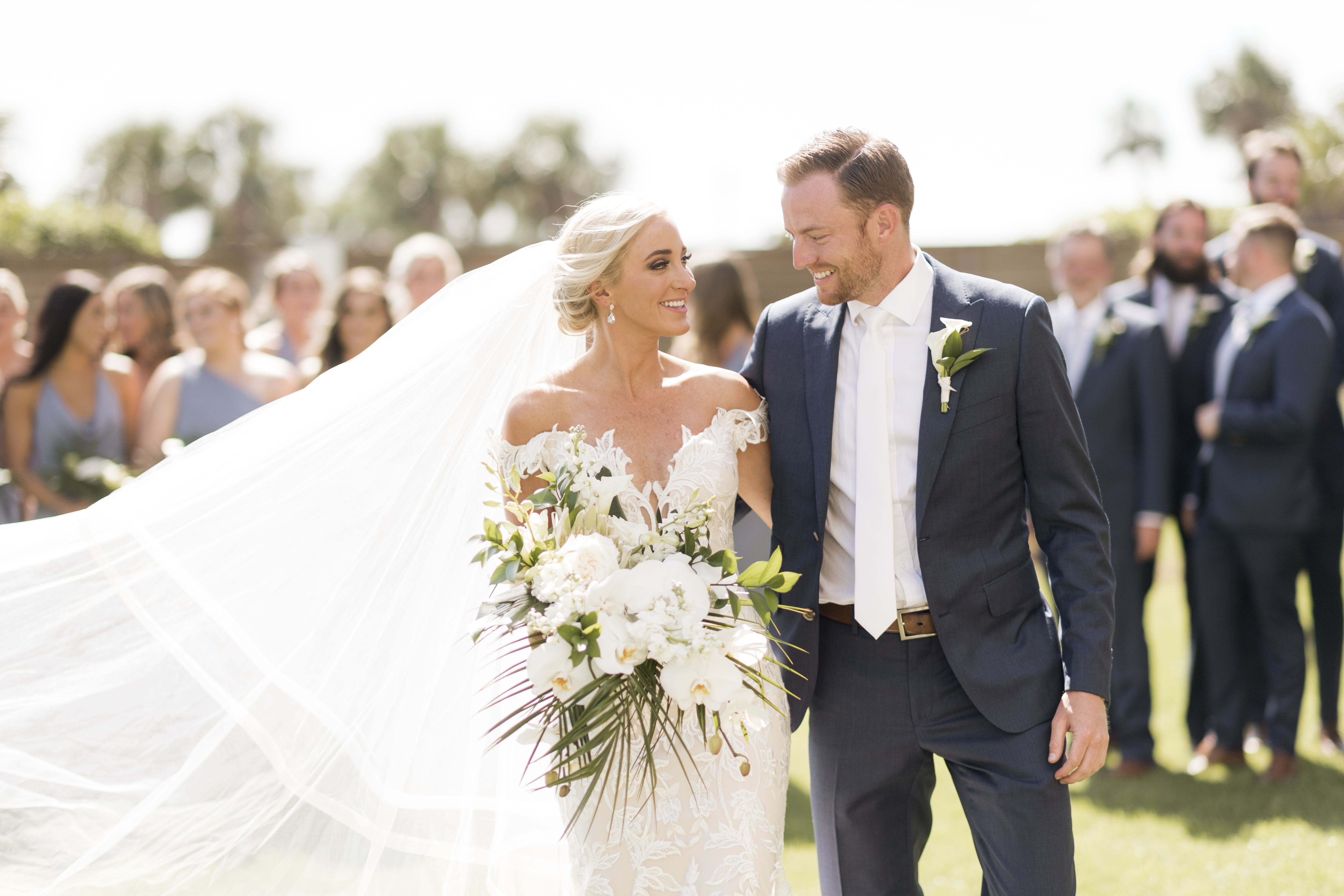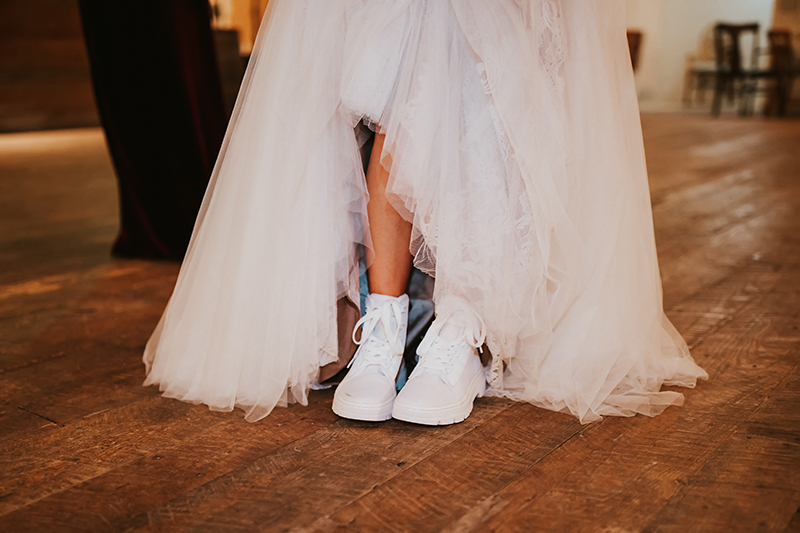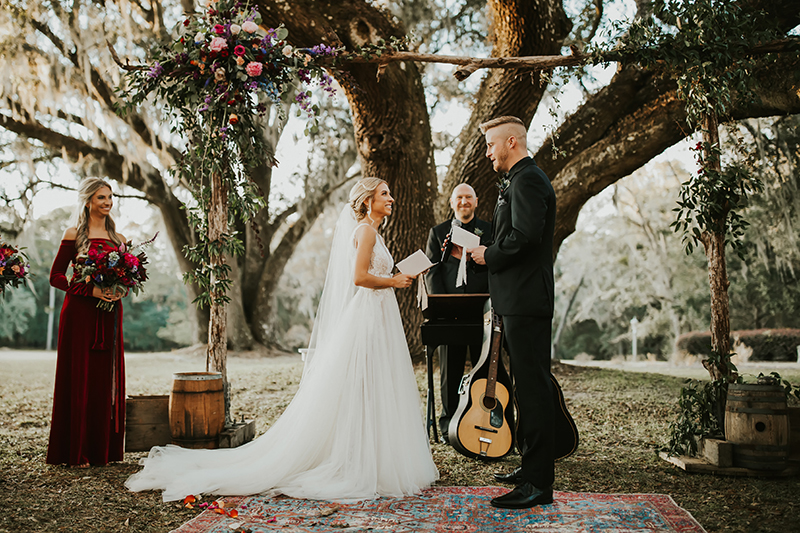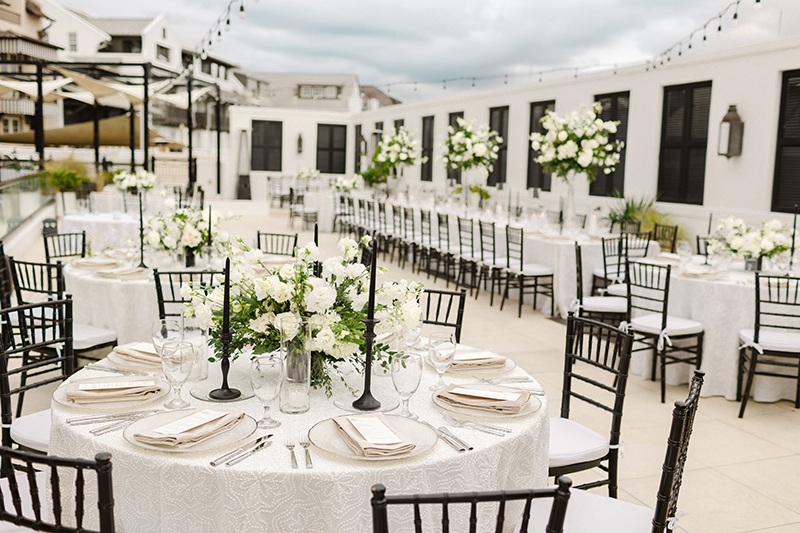The Short and the Long on Veil Styles
By Rebecca Padgett Frett
Be they sort and chic, long and dramatic or any length in between, veils are having a major fashion moment — cue wedding photos of Kourtney Kardashian and Hailey Bieber. The wearing of veils has transcended past tradition and superstition to become trendy. With a variety of options that all look stunning, much like a wedding dress, it can be hard to select “the one.”
The veil originated in ancient Rome and symbolized the bride’s purity as the father presented her to the groom. It was seen, too, to act as a shield to protect the bride from evil spirits on her wedding day.
Brides now view veils as just another way to accessories, and plus, when else might you ever wear such a fabulous and elaborate statement piece?
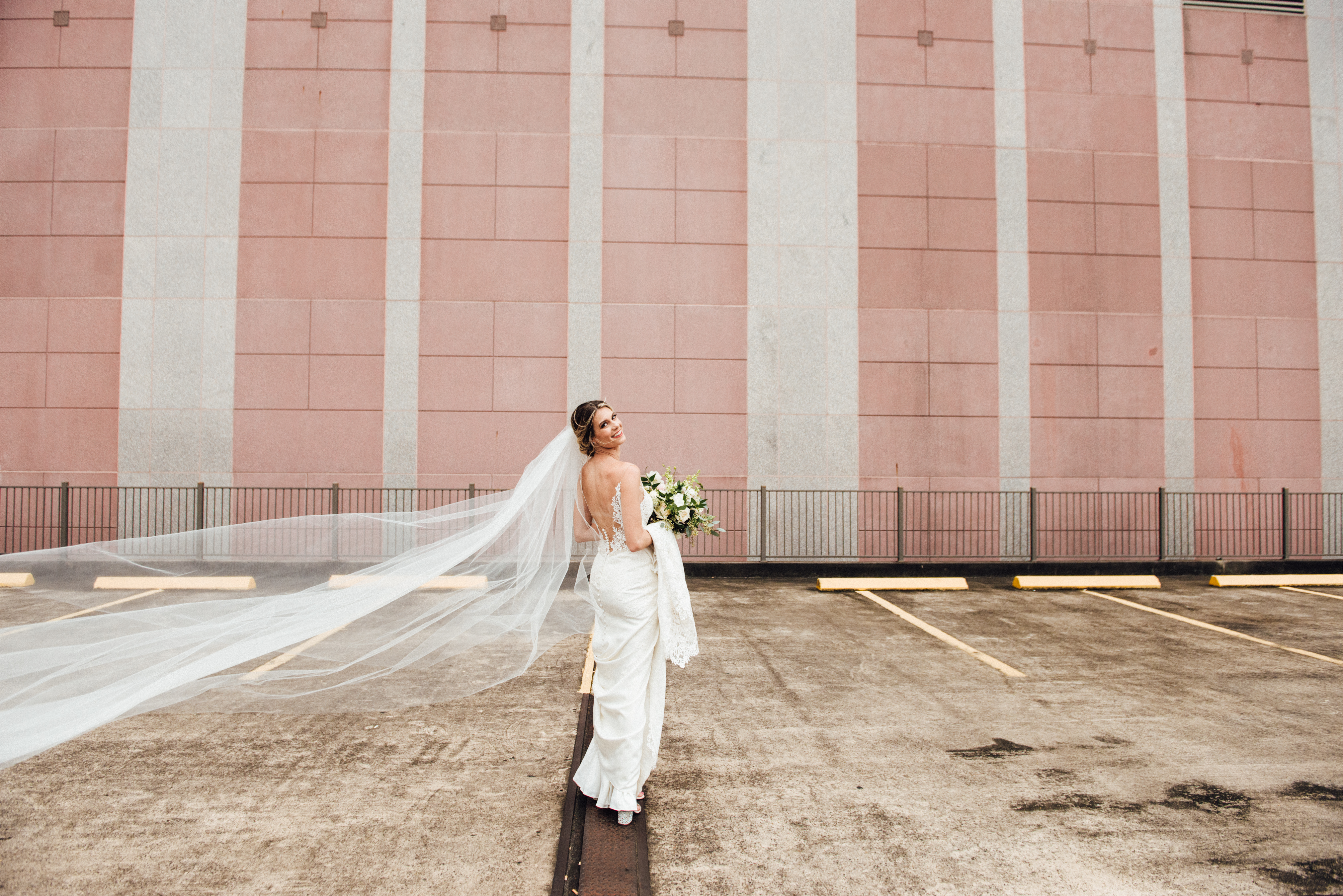
Consider if You Want to Wear One
Veils are not a wedding requirement. Maybe a veil isn’t for you, and that’s OK! Other options could include hair pins, combs, barrettes, headbands, flower crowns, tiaras, feathers, a hat, a bow or your hair styled up or down.
Budget
Many brides, myself included, are surprised by the price tag on veils. A simple, shorter veil can begin at $150 to $300 with the price going up by length and intricacy. Long, ornate veils can easily cost as much as a dress. While you may want to try on veils at the bridal shop to get an idea, you can always find veils online for less.
Style with the Dress
Say yes to the dress before you say yes to the veil. You’ll want to have your dream dress secured and preferably fitted to you before deciding on a veil. This way you can achieve the full effect. The stylist at the boutique will be able to help you if you don’t have a particular style in mind. I encourage you to try a variety of styles and fabrics as it might surprise you what looks and feels right with your dress. For instance, a simple, chic satin dress looks stunning with a long, ornate lace veil. Or a lacy gown pairs well with a short veil scattered with pearls.
Consider your hairstyle
A veil can look drastically different on a sleek bun versus loose beach waves. In general, you may want to pin your veil below the updo your hair stylist worked hard on. With hair worn down, you can pin the veil at the crown, adding volume. You’ll also want to consider the placement of any hair accessories.

Veil Styles Explained
Bird Cage 4-9”
The bird cage veil first gained popularity in the 1920s and ’30s to conserve fabric during the war. This style is the shortest of the veil options. Depending on the length, this covers just the eyes, skims the nose or meets the jawline, and is typically made of lace or net material.
Shoulder Length 20-22”
This style kisses the shoulders, which is a great option for a casual dress or one with a unique neckline.
Blusher 30”
Typically meets the top of the dress or chest. These are the veils typically worn over the face and then pulled back to reveal the bride.
Elbow Length 32”
This veil falls around the elbows and doesn’t get in the way while complimenting most dress styles.
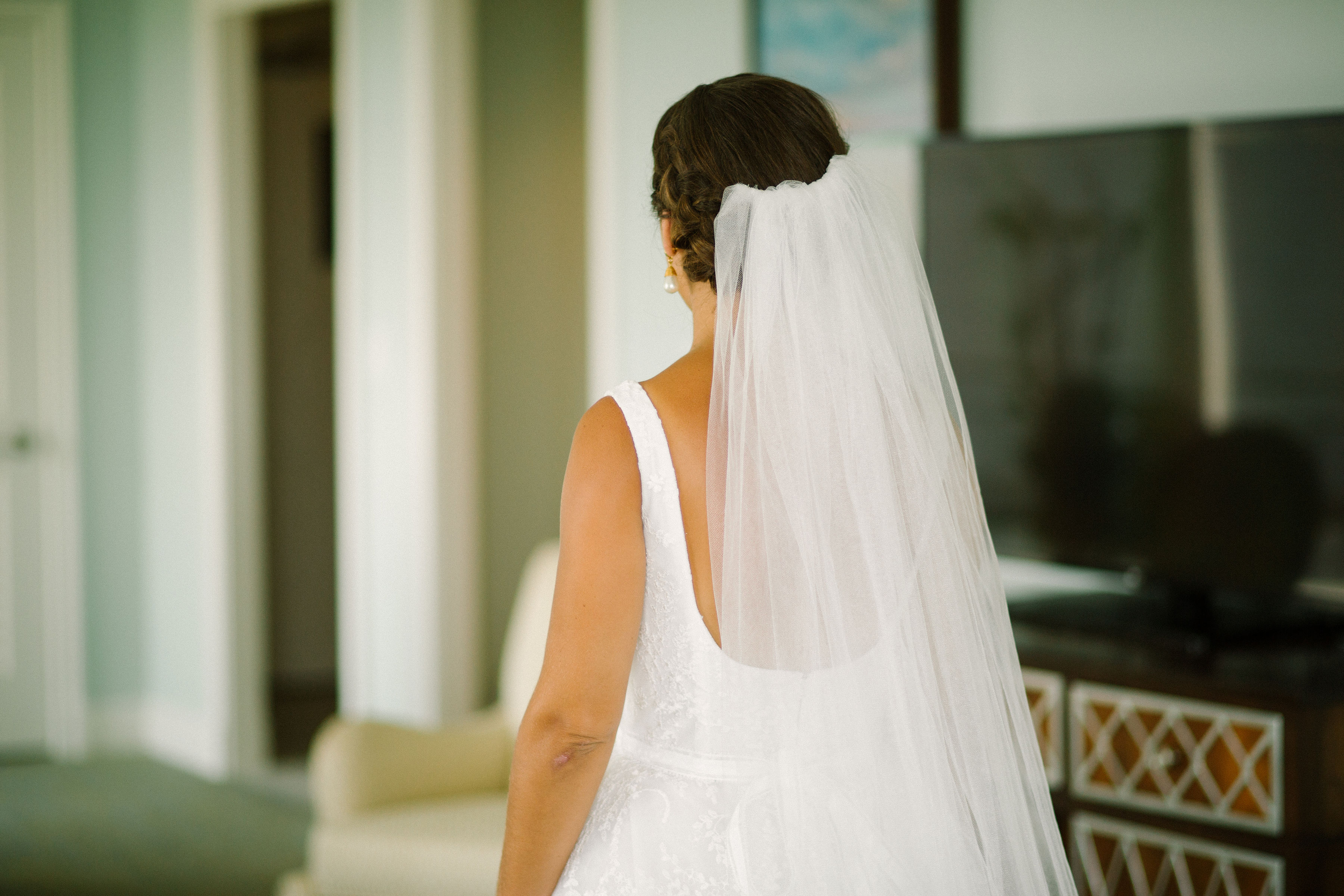
Fingertip Veil 38-40”
One of the most popular and conventional styles. This pairs well with all dresses and hangs very naturally on all brides.
Knee-Length 48-52”
A bit more dramatic than the fingertip veil. Since heights differ, these can be adjusted to each bride’s body type. These create a great symmetry with a knee-length dress.
Waltz Veil 60”
These veils reach the middle of the calf, making a perfect option for those who like the look of a long veil, but don’t want a train. It’s a long veil you can still get down on the dance floor in.
Floor-Length 72”
Typically matches the length of your gown, just grazing the floor.
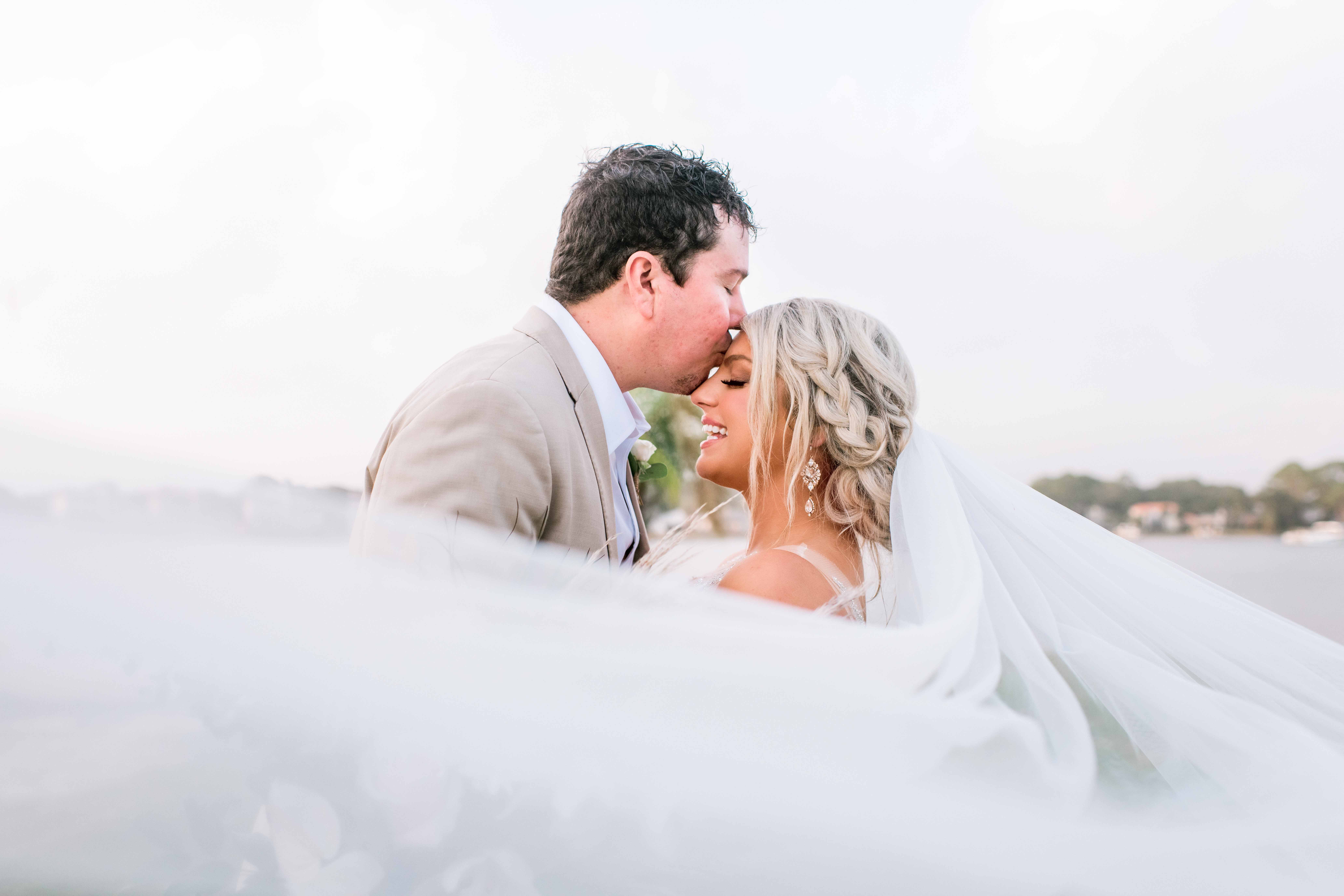
Chapel Wedding Veil 90”
These veils create the illusion of a train sweeping the floor and extending beyond the gown.
Cathedral Veil 108-120”
Extending far beyond the gown, th

